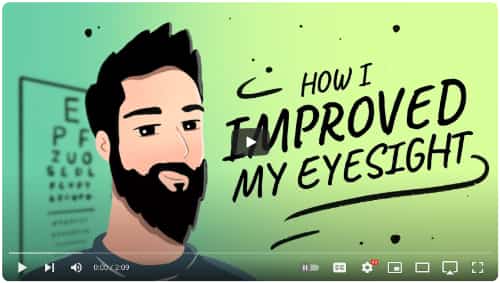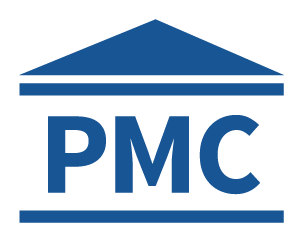sly shinkai
ofWudan
- Joined
- Sep 4, 2021
- Posts
- 206
- Reputation
- 224
From a young age, we all have our eyes checked by the ophthalmologist. You may not need glasses from the start, but as you learn how to read books, and start reading books or play games on a tablet/PC(close-up activities), your eyesight starts deteriorating. You start seeing blurry when looking in the distance. You go with your worried parent to the ophthalmologists, that prescribes you your FIRST pair of glasses. Now you are seeing perfectly as before. But you start using your glasses that are for distance at close up because you start using them at school and you need to watch the whiteboard and write in your notebook too. As time flies you end up getting more and more glasses with higher and higher diopters. So what happened that you got in this situation? What went wrong? Did you not use your glasses right? Were your parents right about these damn smartphones? Well, let me explain...
But you start using your glasses that are for distance at close up because you start using them at school and you need to watch the whiteboard and write in your notebook too. As time flies you end up getting more and more glasses with higher and higher diopters. So what happened that you got in this situation? What went wrong? Did you not use your glasses right? Were your parents right about these damn smartphones? Well, let me explain...
Other bad habits which affect vision, though probably don't contribute to the progression of myopia:

Active Focus can be described as conscious relaxation of the ciliary muscle. It results in clearer vision and provides stimulus to improve eyesight in the long term. It's probably the largest stumbling block that is beginning to improve your eyesight.
Active Focus attempts to push the distant vision of the eyes slightly further. However, as accommodation is a voluntary process, achieving Active Focus is not straightforward. While it is easy to move the skeletal muscles of your body, it is not possible to control the ciliary muscles in the same way. However, by careful manipulation of the blurred horizon, it is possible to encourage the eyes to push slightly harder to achieve focus. This extra push is what Active Focus is about.
In order to do this successfully, it is important to introduce an appropriate amount of blur challenge to the eyes. This can be accomplished by the use of normalized and differential glasses. As opposed to full correction glasses where everything is always sharp, normalized and differential glasses provide convenient access to a blurred horizon. This blur horizon allows for the practice of Active Focus. Again, the blur challenge should not be so much that it is too difficult for the eyes and not so little that it is unnoticeable.
If you check your Snellen with your next, i.e. reduced pair of normalized, and you can see the 20/50 line, you could start using those, provided you are reasonably comfortable with that much blur. But always keep your previous correction for driving, make sure you are being safe and within legal guidelines, check your local vision requirements.
This one might not produce hard figures like the other two methods, so it's better to use this exclusively only once you're sure you're getting improvements as verified by the other methods that produce numbers.
Thx for reading and for more info go to:

 endmyopia.org
endmyopia.org

 wiki.endmyopia.org
-
wiki.endmyopia.org
-
You don't need to buy what he offers as he gives most of the info for free. I suggest reading as much as you can because there is actually a way to fix your eyesight. Hope I gave you some hope and motivation.
Why myopia gets worse over time?
Poor vision habits
- Too much close work,
- while wearing glasses that are too powerful
Other bad habits which affect vision, though probably don't contribute to the progression of myopia:
- Not blinking enough, causing Dry eye
Myopia, also known as shortsightedness is not a disorder, a disease, or a lifetime sentence to expensive glasses slash contacts. It's actually your eyes doing their job properly. Our eyesight is an amazing dance between the software of our brains and the mechanisms of our eyeballs. It's a series of tiny unconscious adjustments made in response to the stimulus of looking at something.
If your glasses prescription has been getting stronger over the years, that's often the result of a feedback loop of stronger lens correction and your eyeballs compensating to deal with it. Thankfully, changes in eyesight are not a one-way street. Let's talk about how your ability to see things clearly at a distance can get slowly better over time instead of worse.
First, the basics of eyeball mechanics. At some point, you probably learned what lenses do. Lenses change the direction of rays of light Positive lenses bend light towards a single point. Negative lenses spread that light out. Positive and negative lenses working together can adjust where that point of focus falls.
Your eyeballs contain a flexible positive lens. This lens is framed by a ring of muscle called the ciliary muscle. When the ciliary muscles relaxed, your lens is at its thinnest. When the ciliary muscle contracts, it pushes inward causing your lens to bulge more. This basically happens without your conscious control. Amazing. Your eyeball has one almighty directive from the brain. Focus the light from the object you're looking at onto your retina at the back of your eyeball. When it hits perfectly, you get a clear image. If it falls short or long of the retina, you'll experience blurriness. The amount of work Your eyes have to do depends on how far away the object is. If you experience myopia, you know that things in the distance are more blurry than things that are nearer to your face.
You're having trouble seeing things far away. Your eye doctor gives you glasses. You can see far away now fabulous. Then you go home and read for a few hours with your new glasses on. While you're doing that your ciliary muscle is working extra hard to cancel out the strong new negative lens that's making this close-up image, the book, fall behind your retina.
If you do something like this every day for months and years, your ciliary muscle is going to get so overworked that your eyeball will grow a tiny bit in length to give it a break. But now, your glasses don't seem to be working quite as well as they used to. And you can't see as far as the distance anymore. So you go to the eye doctor, they prescribe you some stronger lenses, and the cycle continues. In the next video, we'll look at ways to break this cycle and introduce habits that can restore your distance vision over time.
If your glasses prescription has been getting stronger over the years, that's often the result of a feedback loop of stronger lens correction and your eyeballs compensating to deal with it. Thankfully, changes in eyesight are not a one-way street. Let's talk about how your ability to see things clearly at a distance can get slowly better over time instead of worse.
First, the basics of eyeball mechanics. At some point, you probably learned what lenses do. Lenses change the direction of rays of light Positive lenses bend light towards a single point. Negative lenses spread that light out. Positive and negative lenses working together can adjust where that point of focus falls.
Your eyeballs contain a flexible positive lens. This lens is framed by a ring of muscle called the ciliary muscle. When the ciliary muscles relaxed, your lens is at its thinnest. When the ciliary muscle contracts, it pushes inward causing your lens to bulge more. This basically happens without your conscious control. Amazing. Your eyeball has one almighty directive from the brain. Focus the light from the object you're looking at onto your retina at the back of your eyeball. When it hits perfectly, you get a clear image. If it falls short or long of the retina, you'll experience blurriness. The amount of work Your eyes have to do depends on how far away the object is. If you experience myopia, you know that things in the distance are more blurry than things that are nearer to your face.
You're having trouble seeing things far away. Your eye doctor gives you glasses. You can see far away now fabulous. Then you go home and read for a few hours with your new glasses on. While you're doing that your ciliary muscle is working extra hard to cancel out the strong new negative lens that's making this close-up image, the book, fall behind your retina.
If you do something like this every day for months and years, your ciliary muscle is going to get so overworked that your eyeball will grow a tiny bit in length to give it a break. But now, your glasses don't seem to be working quite as well as they used to. And you can't see as far as the distance anymore. So you go to the eye doctor, they prescribe you some stronger lenses, and the cycle continues. In the next video, we'll look at ways to break this cycle and introduce habits that can restore your distance vision over time.
Active Focus can be described as conscious relaxation of the ciliary muscle. It results in clearer vision and provides stimulus to improve eyesight in the long term. It's probably the largest stumbling block that is beginning to improve your eyesight.
How it works
Active Focus resolves a small amount of myopic defocus. Doing Active Focus provides the necessary stimulus to reverse the effects of myopia. It is also important in managing eyestrain.Active Focus attempts to push the distant vision of the eyes slightly further. However, as accommodation is a voluntary process, achieving Active Focus is not straightforward. While it is easy to move the skeletal muscles of your body, it is not possible to control the ciliary muscles in the same way. However, by careful manipulation of the blurred horizon, it is possible to encourage the eyes to push slightly harder to achieve focus. This extra push is what Active Focus is about.
In order to do this successfully, it is important to introduce an appropriate amount of blur challenge to the eyes. This can be accomplished by the use of normalized and differential glasses. As opposed to full correction glasses where everything is always sharp, normalized and differential glasses provide convenient access to a blurred horizon. This blur horizon allows for the practice of Active Focus. Again, the blur challenge should not be so much that it is too difficult for the eyes and not so little that it is unnoticeable.
Reverse Your Myopia
- Get slightly reduced glasses for other times when you don't need perfect vision. We call these normalized. They give a slight blur challenge at a distance. Because glasses are generally rounded off to the nearest quarter diopter, full-strength lenses are likely to be slightly overprescribed even if your optometrist follows the best practices and procedures of his profession. A quarter diopter low would put your distance to blur at 4m or about 13 feet, and allow your ciliary muscle to relax when viewing at that distance and beyond.
- Find Active Focus, a way of getting your eyes to see slightly further than their normal distance to blur.
- When you're ready, do your first reduction
How to measure your eyesight
Measuring your eyesight can be done in several different ways. Remember eyesight fluctuates from day to day based on many factors, one measurement alone is not necessarily the most accurate indication of your vision. Before you order a new correction or decide to reduce, try to get enough measurements to have a good idea of what your typical vision is. Since you are measuring yourself you can take the time to get a better idea of what your most consistent vision is.Centimeter measurements
Centimeter measurements are seeing your distance to blur with a tape measure held against a screen or book. 12 point font is recommended, you will see blur at the same distance regardless of font size, however, it will be easier to distinguish the edge of blur with 12 pt font.Snellen chart
A Snellen chart is good as it controls a lot of variables. If you stand at the same distance with the same given pair of glasses in similar, or same lighting and notice an improvement over time, then it's safe to say your eyesight is improving.If you check your Snellen with your next, i.e. reduced pair of normalized, and you can see the 20/50 line, you could start using those, provided you are reasonably comfortable with that much blur. But always keep your previous correction for driving, make sure you are being safe and within legal guidelines, check your local vision requirements.
Real-world object
This usually works best with signs. Take a given object, preferably with text that you see very frequently, and see whether there's an improvement over time in how well you can see the object.This one might not produce hard figures like the other two methods, so it's better to use this exclusively only once you're sure you're getting improvements as verified by the other methods that produce numbers.
Thx for reading and for more info go to:

Improve Your Eyesight
Improve Your Eyesight: An evidence based set of myopia reversal tools. Lots of science, studies, biology, and thousands of first hand improvement reports.
 endmyopia.org
endmyopia.org

EndMyopia Wiki
You don't need to buy what he offers as he gives most of the info for free. I suggest reading as much as you can because there is actually a way to fix your eyesight. Hope I gave you some hope and motivation.
Last edited:



